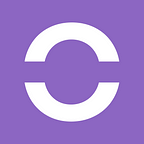7 reasons why you should move from Spark AR & Lens studio to WebAR
Even though it may seem like creating and distributing AR content through social media is the best option, there are many limitations.
Brands want to create AR filters to enhance their digital campaigns because it potentially increases the number of followers and creates brand awareness. However, they usually choose to create AR content with apps developed by the giants of social media (Facebook, Instagram, or Snapchat). These platforms have Spark AR or Lens Studio apps that are open for any user who wants to create AR filters. Here’s why you should switch from these apps to WebAR:
1. Your AR content depends on Social Media’s terms and conditions.
Social media rules and policies limit brands’ AR creations, keeping them from implementing creative ideas. For example, logos should be wholly integrated with the content, which must not contain hashtags, URLs, or QR codes. Also, you have to comply with all of the requirements and conditions for them to approve your content. The review process can take days or even weeks. Also, they control content related to alcohol and other kinds of products.
Trending AR VR Articles:
1. How VR could bring transhumanism to the masses
2. How Augmented Reality (AR) is Reshaping the Food Service Industry
3. ExpiCulture — Developing an Original World-Traveling VR Experience
2. Filters get lost inside the social media app.
When looking for filters, users find way too many options. Brands’ filters are hard to find among all the other user-generated filters, which are a lot. However, another way in which users can find a brand’s filter is when users are just scrolling through other people’s content and find someone else using it. Either way, the brand logo will not be very visible, making it hard for the user to see it quickly.
In the end, users get distracted because the AR content is inside the social media platform, where there are millions of other things to see. Brands don’t get the attention they wish for, having to compete with TikTok dances, Instagram superstars, and any other interesting content that is just a click away.
3. Results measurement is tricky.
With social media platforms, you can see impressions, captures, and shares of your AR content. Impressions are the number of times that the AR filter has been displayed on a screen. This means that it might have millions of impressions just because people have scrolled quickly through the content without really engaging with it or even without realizing it was related to a brand. Indeed, Spark AR metrics don’t show unique users; if users scroll past it more than once, it sums as another impression. With WebAR you can simply set up Google Analytics on your AR experience.
4. WebAR is an alternative to using social media platforms for creating AR content.
Luckily WebAR exists, which is a way to have AR experiences directly in the web browser. The AR experience starts by just clicking on a link or pointing your camera at a QR code. Then, the camera will be enabled in the browser to enjoy the AR content there, making it easily available on any device with any operating system and no need to have an app installed.
WebAR is the best option agencies have to be the owners of the channel from which they are sharing the AR content. Here’s why:
5. WebAR is way more engaging and accurately measurable.
AR content can produce the highest level of user-brand engagement only when it’s truly interactive. To engage, AR content needs to be dynamic and give something back to the users. WebAR allows tailor-made experiences that require more input from the user and, therefore, more engagement and more fun. The degree to which consumers feel in control and enjoyment when interacting with the AR content is key to changing their attitudes and behavior towards the products.
When the AR layer is on a social media platform, the engagement is significantly reduced given the speed at which users scroll through the feed or stories. With WebAR, you can be sure that users are engaged in the experience because they actively decided to start it. This way, brands can measure time spent on the experience, unique users, views, clicks, etc.
6. No guidelines, no waiting for approval, and no high prices.
WebAR allows creatives to do anything they can imagine. From simple things like placing the brand logo anywhere or more complex ones like creating a whole experience in which the user can click on the AR content and change from one scene to another, enabling a journey that lasts much longer than, for example, a face filter on Instagram.
7. WebAR is independent of Social Media.
Another advantage is that WebAR is independent of social media platforms in terms of costs. If you want to have sponsored Lenses on Snapchat, it can vary from USD 450,000 to USD 700,000 per day. On the other hand, WebAR URLs can be shared on any social media platform, and the costs of publishing and sharing them are low compared to all the other options.
With WebAR you’re also independent in terms of time spent on developing the experience. You can build one experience that works in any web browser, instead of having to build for both Instagram and Snapchat platforms.
Filters and lenses have become a commodity.
Nowadays, everyone can create one, and it’s no longer a special thing. If brands want to stand out and share something truly captivating, they should think twice when deciding between WebAR and social media platforms
At Hololink we help you create interactive WebAR experiences with no need to know how to code and develop apps. Get access by going to Hololink.io
Follow our blog to learn more about what AR can do for you.
